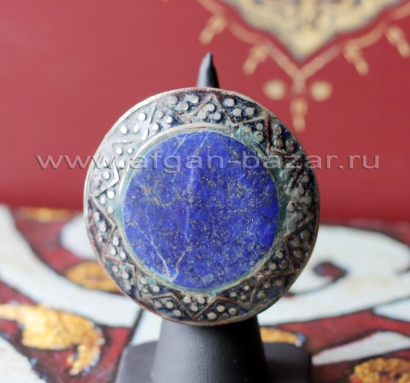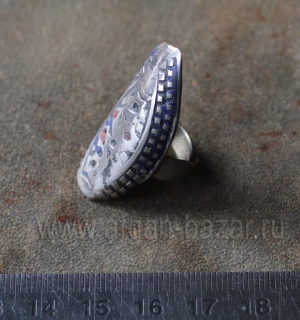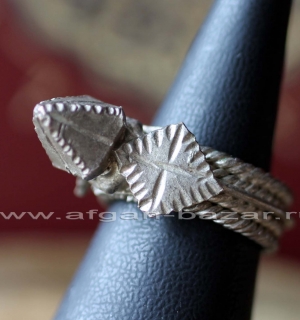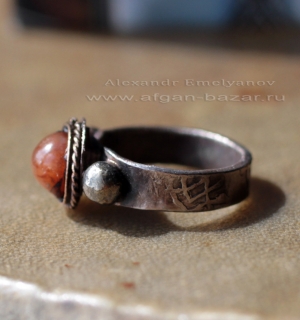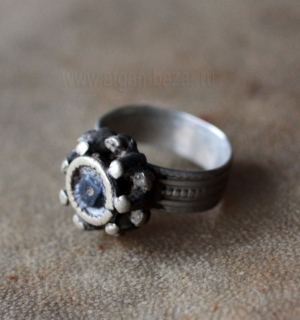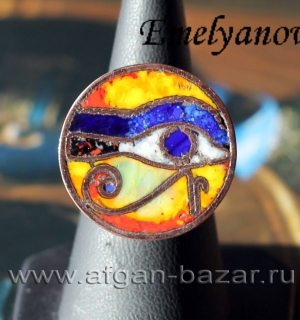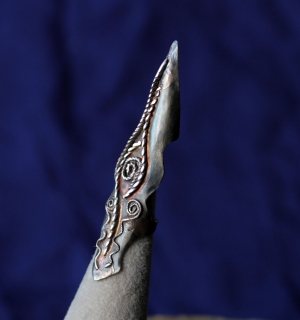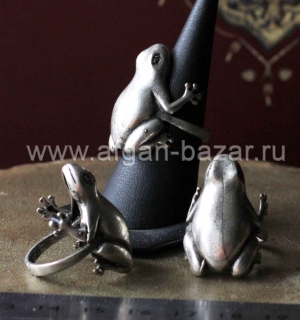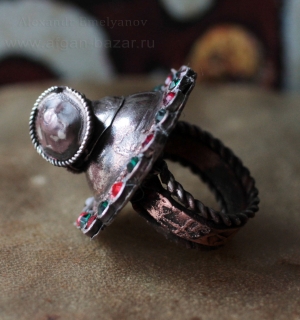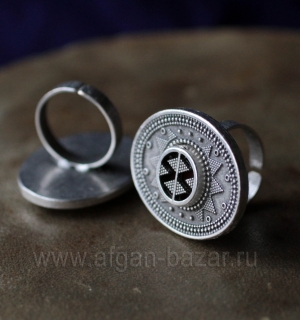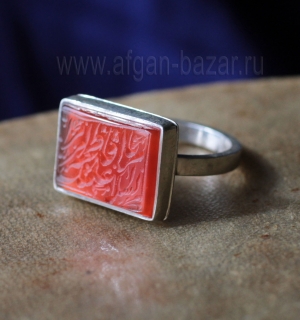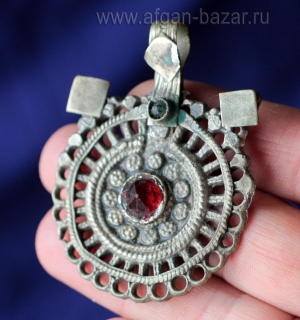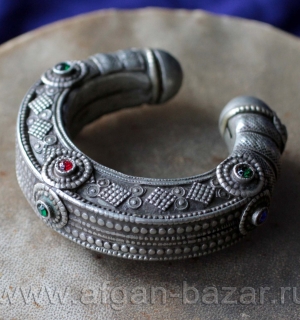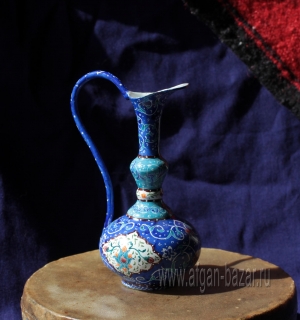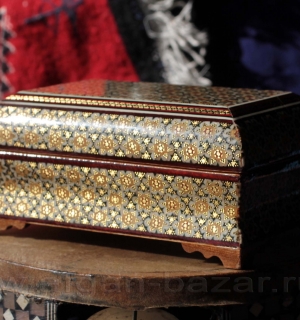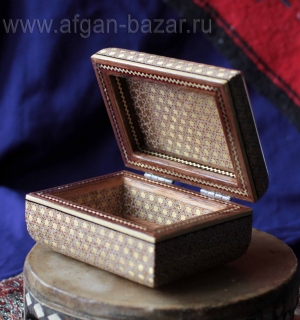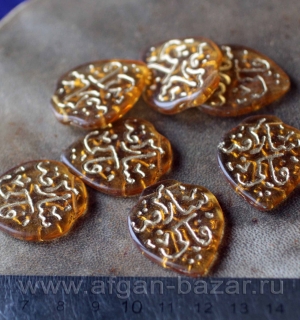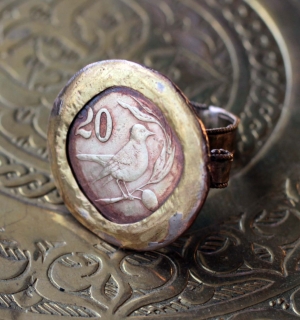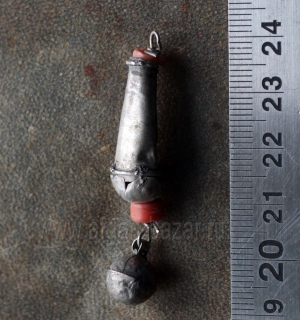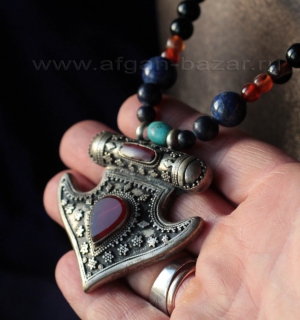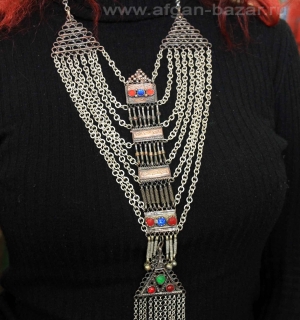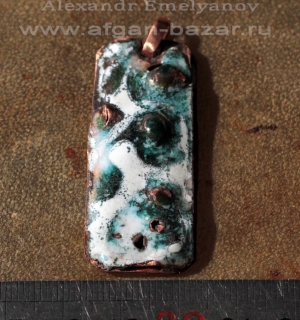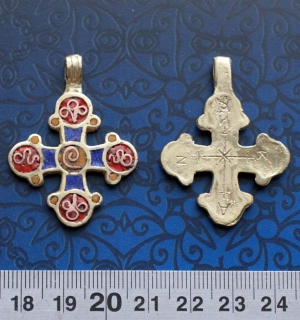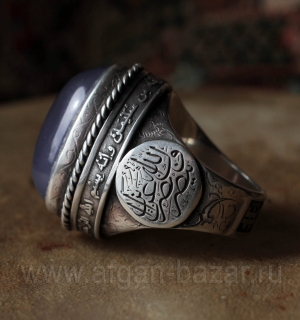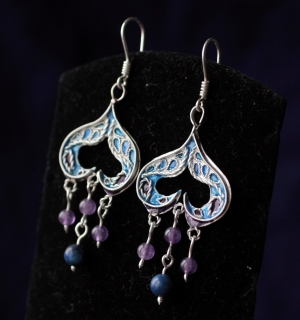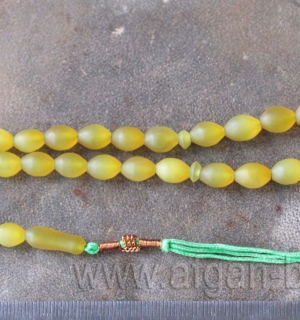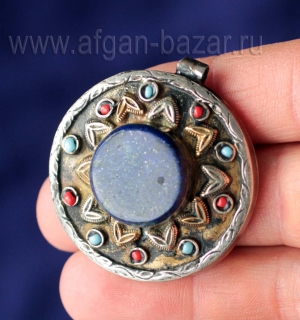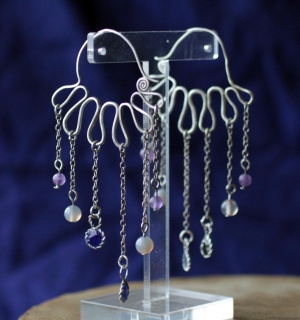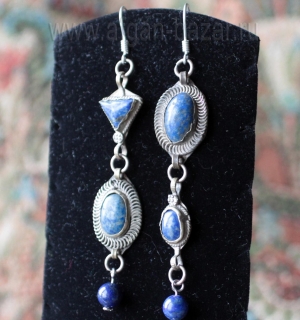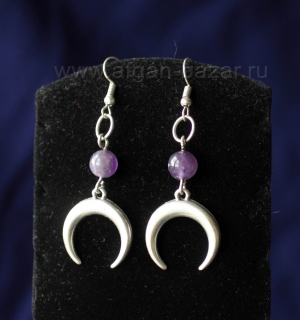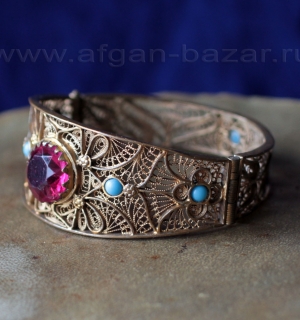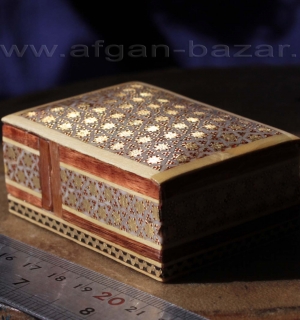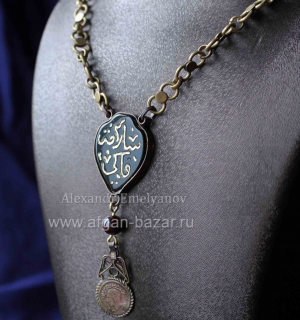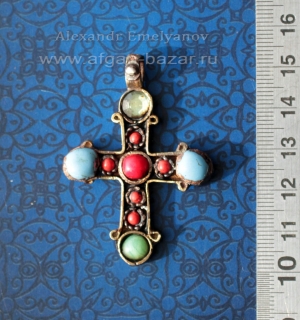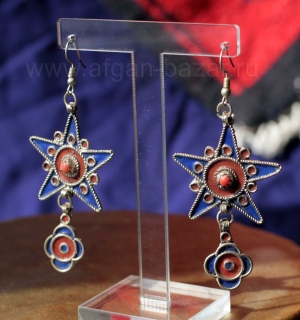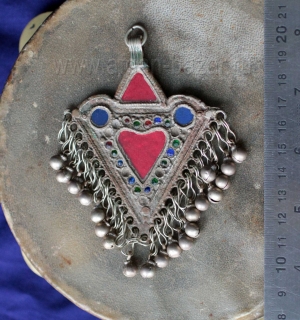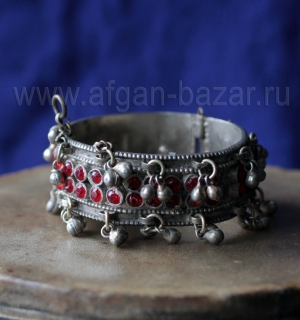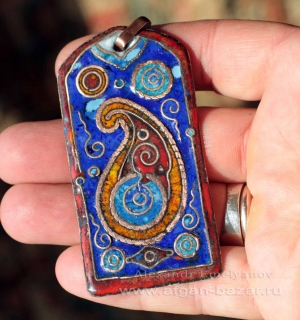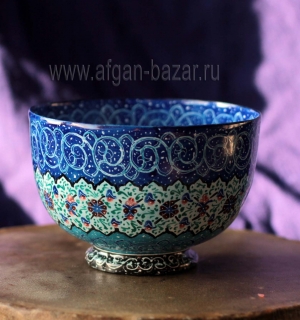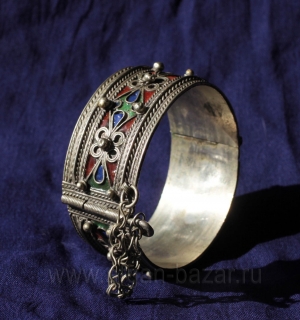Антикварный коллекционный перстень с эмалью и лазуритом.
Пакистан, провинция Мультан, первая половина или середина 20-го века
Металл - "Чамкали", сплав серебра с медью (50%), штамп, горячая эмаль.
Вставка - лазурит.
Высота от пальца - 14 мм
Диаметр - 48 мм
Вес - 43 г.
Размер 14
Интересный образец традиционных пакистанских украшений с эмалью.
Традиции эмалирования ("Менкари" или "Meenkari") развивались в провинции Мультан на юго-западе Пакистана с 19-го до середины 20-го века (после отделения Пакистана от Индии традиционные эмали пришли в упадок). В Пакистан эмаль проникла по видимому из Индии или Ирана в конце 18-го века.
Судя по монохромной эмали зеленого цвета и использованию сплава вместа высокопробного серебра этот перстень относится к позднему периоду (не ранее начала 20-го века). Более ранние образцы делались с применением нескольких цветов, обычно темно-синего или зеленого, красного и желтого.
Вместо камня в крупный перстень чаще вставляли зеркало. Есть версия, что это делалось для невест, чтобы они могли прверять свой наряд во время свадебной церемонии. Крупные перстни с зеркалами до сих пор используются в свадебном наряде невест в Индии и восточном Пакистане.
Vintage Pakistani Multan enamelled Tribal Ring with Lapis Lazuli
Collectible item
Pakistan, Multan, middle of 20-th century
100% handmade,
Base metal, casting, soldering, hot enamel champlevee.
The Lapis lazuli insert.
Height from the finger - 14 mm. (0,6 ").
Diametr of the top - 48 mm. (1,9 ").
Weight - 43 g. (1,5 Oz).
Size - 14 (4 for USA).
The Lapis lazuli insert might be resettled in late 20th century by Afghan traders, but the ring is original Multan production. These rings was bride accessories and inserted with round mirror
The traditions of enamelling ("Minakari" or "Meenkari") developed in the province of Multan in the South-West of Pakistan from the 19th to mid 20th century (after the separation of Pakistan from India's traditional enamel declined). In Pakistan, the enamel is penetrated apparently from India or Middle East in the late 18th century.
Lapis lazuli is one of the three most sacred stones of the Ancient World (along with turquoise and cornelian). In Ancient Egypt, this stone was dedicated to Hathor - the goddess of Love. Is most appreciated dark blue lapis pure color. It was brought from distant Afghanistan, where to this day there is the world's largest field of the world's best lapis lazuli.
In ancient times, it was believed that lapis lazuli has a magical effect on people. It was compared to the night sky and the depths of the sea.
In Mesopotamia and Babylon lapis lazuli was highly valued, it was considered a "male" stone in contrast to carnelian, which since ancient times is associated with the feminine.
Since time immemorial, lapis lazuli has been used to make beads and jewelry inserts in the territory of modern Afghanistan.
The most valuable varieties of lapis lazuli-stones with deep blue color and blue-white speckled pattern. Lapis lazuli often has inclusions of Golden pyrite that accentuates and complements the natural color.
References:
1. Alfred Janata. Schmuck in Afganistan. / Janata A. - Graz: Akademische Druck – u. Verlagsanstalt, 1981. - s. 128-129.
2. Wolf-Dieter Seiwert. Jewellery from the Orient. Treasures from the Bir Collection. – Stuttgart: Arnoldshe 2009 – 320p.

